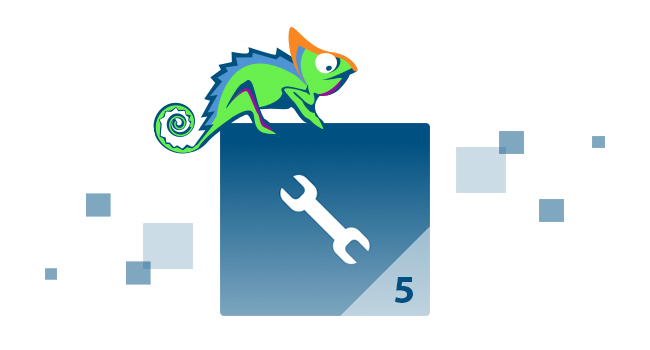In our mini-series, we have showcased over the past two weeks how software can be utilized to optimize maintenance processes (click here for part 1, 2, 3 or 4). In this final installment of our mini-series, we will discuss the latest technologies available on the market that can further enhance the efficiency of maintenance processes for companies. These technologies include artificial intelligence (AI), robotics, augmented and virtual reality (AR and VR), condition monitoring, and predictive maintenance. By leveraging these technologies, companies can simplify their work processes, tackle the shortage of skilled workers, and adapt to changing times.
At speedikon, we stay at the forefront of innovation through our in-house research lab B-IT LAB (formerly FUTURE.LAB). We keep abreast of the latest trends, conduct research on disruptive technologies, and develop them further to suit the specific use cases of our customers.

Predictive Maintenance: Preventing Downtimes with AI
Predictive maintenance and condition monitoring are crucial aspects of maintenance for technical systems. The primary objective is to monitor systems on a granular level using various data sources. Plant manufacturers enjoy a significant advantage in this area since they possess vast amounts of data on their plants that can be integrated into maintenance processes, such as predictive maintenance and condition monitoring. If there are several plants of the same type within your plant, the monitoring data can be incorporated into speedikon C or WiriTec C. This enables you to identify and correct any anomalies, inefficiencies, or problems promptly. As a result, deviations, inefficiencies, or even unfavorable fluctuations can be detected, and conclusions can be drawn about the status of the plants. By linking this data with maintenance process data, we can provide insights into maintenance strategies and suggest ways to adapt them accordingly.
Robotics: four-legged helpers on the move in industrial plants
Robots are currently a hot topic in the industry, and when combined with AI, they make it easier to inspect plants, especially in areas that can be hazardous or extremely stressful for humans. In fact, robots are already being utilized to inspect equipment and transmit data in real-time to the relevant maintenance software. By incorporating digital twins, which are digital replicas of physical objects, these four-legged robots can be given ad-hoc missions, and the inspection information can be displayed in real-time on the digital twin at the respective plant. In addition, the four-legged helper can spontaneously and automatically perform inspections if, for example, an IoT sensor reports a malfunction. This enables quick and efficient response to potential problems, minimizing downtime, and improving overall productivity.
Access to every piece of information in real-time and on-site with AR
Augmented reality (AR) offers many possibilities for optimizing maintenance processes. With AR, your employees or service providers can access real-time information on the respective plant through a digital twin, displaying instructions for repair or maintenance in their field of vision. This enhances the efficiency and effectiveness of your maintenance teams, enabling them to solve problems together through the integrated communication options available in the digital twin. Although there is a lack of practical eyewear technologies for the implementation of AR in the industrial sector, we use tablets and smartphones as end devices, which are already ubiquitous in every company, available in different designs, and have low acquisition costs. By utilizing these devices, we can easily integrate AR technology and take advantage of the benefits it provides without the challenges associated with other AR technologies.
Knowledge Management: Digital Twins in Maintenance
As the amount of information exponentially grows and the shortage of skilled workers becomes more acute, new forms of knowledge management are becoming increasingly important for companies. Furthermore, many experienced specialists who have worked on their plants for decades and have accumulated valuable knowledge will be retiring in the coming years. To preserve this informal knowledge about maintenance and plant configuration within the company, it needs to be digitalized.
In this regard, a photorealistic digital twin with its diverse illustrative documentation options offers significant advantages. The realistic environment brings the plant to life on the screen, enabling employees to save their knowledge in the form of notes, documents, instructions, or even videos about the respective plant and make it available to colleagues. After an employee leaves the company, the information remains in the software for the next generation. Additionally, further information from third-party systems can be displayed in the digital twin via interfaces (more information here). If necessary, employees can jump off to the third-party system and continue working there, with the changes being transferred to the digital twin in real-time and updated accordingly. This way, the photorealistic digital twin acts as a convenient interface for retrieving all available information about the assets in the company, regardless of the software in which they are documented (click here to learn more).
In general, these new technologies offer many opportunities to improve maintenance processes, reduce downtime, and secure internal knowledge. Therefore, companies should address these technologies at an early stage and use them strategically to remain competitive.
We hope that our mini-series has provided clarity on what is possible with software and the latest future technologies in the field of maintenance. Please feel free to contact us at 0049 6251 584 0 or by email at info@speedikonfm.com, and together we can implement solutions tailored to your specific needs.